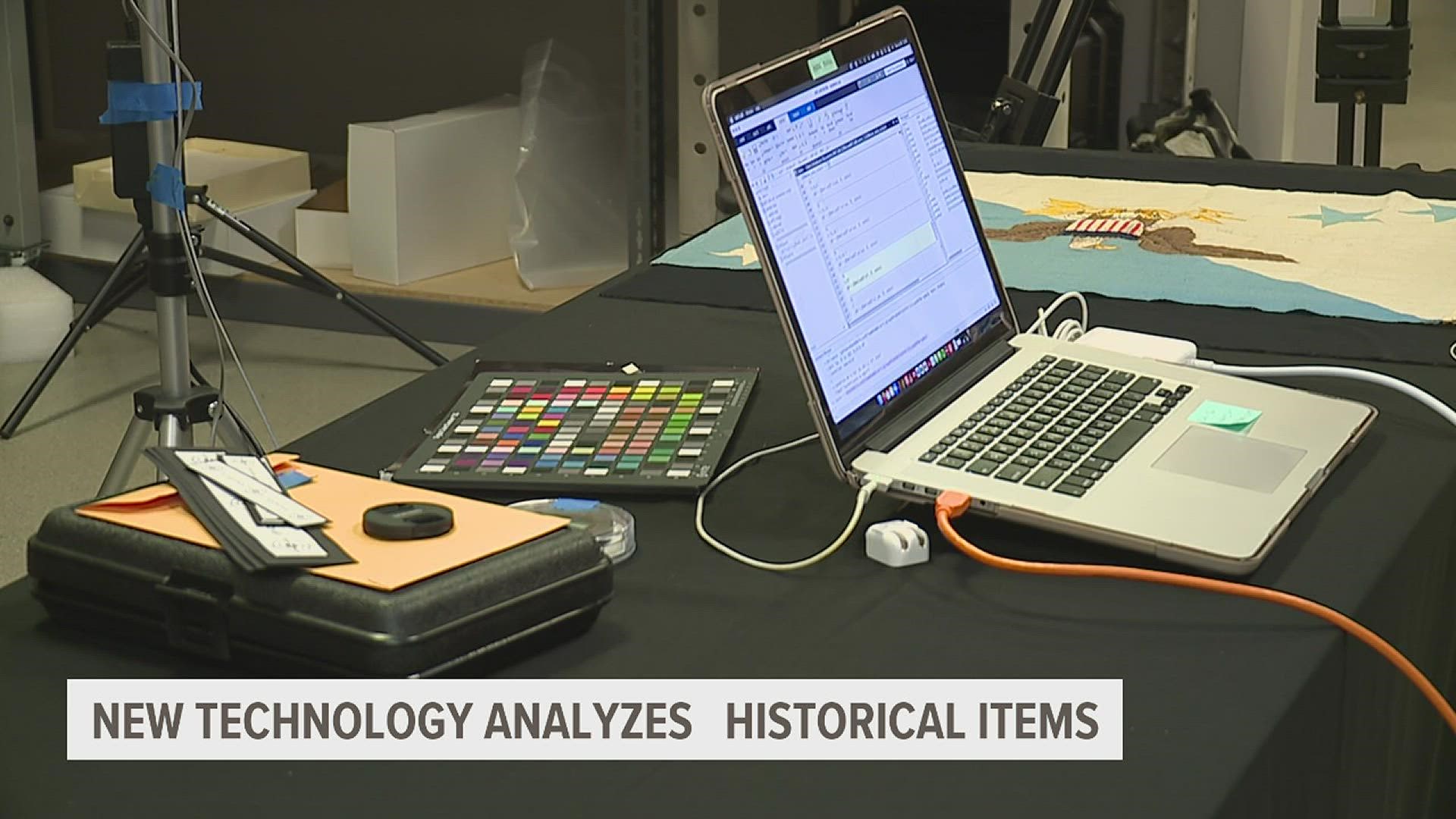CUMBERLAND COUNTY, Pa. — Scientists are now shining a light on the past in a whole new way.
A process called "Practical LED-based Spectral Imaging" was on display on Tuesday at the U.S. Army Heritage and Education Center (USAHEC) in Cumberland County. The demonstration was in partnership with the Rochester Institute of Technology (RIT), who developed the system.
The technology takes images of historical items and then displays them on a monitor to reveal things like unseen damage or hidden text. According to experts, this technology will help people get a more detailed look at historical items.
Director of the USAHEC Geoff Mangelsdorf said, "Using some of this tool, like this multi-spectral imaging, lets us present very detailed, very precise images of a material that otherwise just wouldn't be on display."
The imaging system is said to help conservation specialists, curators, archivists, and librarians determine what kind of conservation practices have been used on their artifact collections, experts say.
"It helps the folks who take care of these objects, conservators, and those folks who work at museums. It helps them understand the objects better so that they can take care of them better," Olivia Kuzio, a graduate research assistant at RIT said. "If you know what something's made of, you know what kind of treatments or restorations you can do on it to make these objects last longer."
With this new technology, examining and documenting cultural heritage objects will provide a more innovative way of historical preservation.
The USAHEC plans to use spectral imaging to tell the Army's story while creating partnerships with organizations from around the world.

